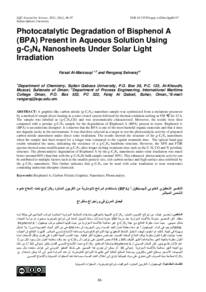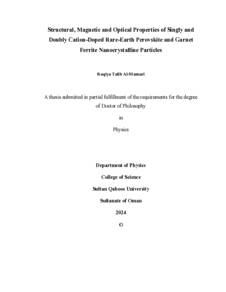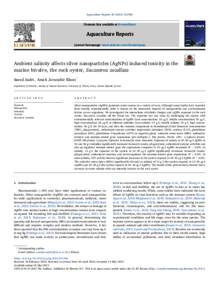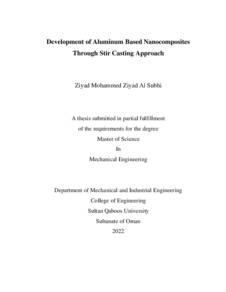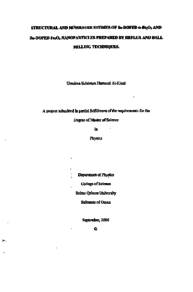Document
Development of selenium-silica nanocomposites by sol-gel process utilizing three different reducing agents and its characterization.
Identifier
Online: 1726-6742
Print: 1726-6009
Source
Journal of Engineering Research, v. 20, no. 2, p. ,130-137.
Country
Oman.
City
Muscat
Publisher
College of Engineering, Sultan Qaboos University.
Gregorian
2023-04-29
Language
English
Subject
English abstract
Nanocrystalline Selenium was synthesized within a silica matrix using a sol-gel method with high-purity SeO₂, ethyl alcohol, distilled water, and TEOS (Tetraethyl orthosilicate). This process encapsulated the selenium dioxide in the silica matrix, which was then reduced at about 100°C using an oil bath. Three reducing agents were employed: acetone vapor, sodium borohydride (NaBH₄), and hydrazine (N₂H₄) in liquid form. DSC-TGA analyses of the precursor mixture determined the crystallization temperature for selenium nanoparticle formation within the matrix to be around 100°C. Post-heating phase analysis via XRD revealed hexagonal structures, with crystallite sizes between 33 and 43 nm determined using Debye-Scherrer's formula. Morphological studies showed irregular polygonal shapes with rough surfaces, with particulate sizes under 0.2 µm for acetone vapor, around 0.1 µm for hydrazine, and slightly over 0.1 µm for sodium borohydride. Time variations were explored to observe phase and crystallite size changes. FTIR analysis was conducted for bonding assessment, revealing M-O coordination. The composite's absorbance was examined through UV-VIS spectroscopy, and its morphological attributes were investigated using FESEM analysis, complemented by EDX to determine elemental composition.
Arabic abstract
تم توليف السيلينيوم النانوي داخل مصفوفة السيليكا باستخدام طريقة السول-جل بمواد أولية عالية النقاء مثل أكسيد السيلينيوم SeO₂، والكحول الإيثيلي TEOS، والماء المقطر. تم تغليف أكسيد السيلينيوم داخل مصفوفة السيليكا، ثم تم تقليله عند درجة حرارة حوالي 100 درجة مئوية باستخدام حمام زيت. تم استخدام ثلاثة عوامل اختزال مختلفة: بخار الأسيتون، وبوروهيدريد الصوديوم NaBH₄، والهيدرازين N₂H₄ في شكل سائل. تم تحليل DSC-TGA للخليط الأولي لتحديد درجة حرارة التبلور لتكوين جسيمات السيلينيوم النانوية داخل المصفوفة، والتي بلغت حوالي 100 درجة مئوية. أظهرت تحليلات XRD بعد التسخين أن الطور الناتج كان سداسي البنية، وتم تقدير حجم البلورات بين 33 و 43 نانومتر باستخدام معادلة ديباي-شيرير. أظهرت الدراسات المورفولوجية أن الأشكال كانت متعددة الأضلاع وغير منتظمة مع أسطح خشنة، حيث تراوحت أحجام الجزيئات تحت 0.2 ميكرومتر عند استخدام بخار الأسيتون، وحوالي 0.1 ميكرومتر للهيدرازين، وقليلًا فوق 0.1 ميكرومتر عند استخدام بوروهيدريد الصوديوم. تم استكشاف التغيرات الزمنية لملاحظة التغيرات في الطور وحجم البلورات. تم إجراء تحليل FTIR لتقييم الرابطة، مما كشف عن تنسيق M-O. تم فحص امتصاص المركب من خلال تحليل الطيف الضوئي UV-VIS، وتم التحقيق في الخصائص المورفولوجية باستخدام تحليل FESEM، بالإضافة إلى تحليل EDX لتحديد التركيب العنصري.
Category
Journal articles

